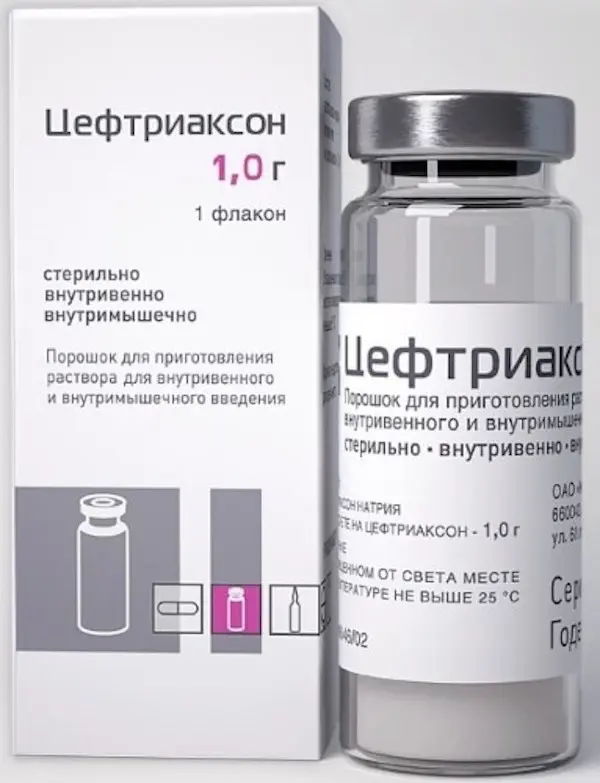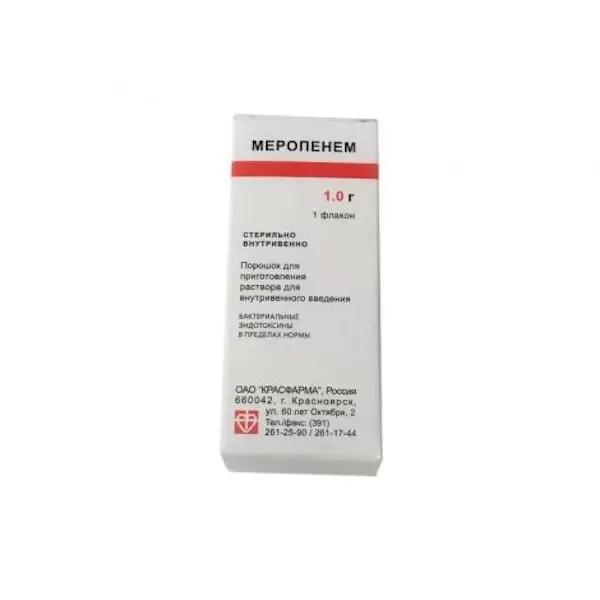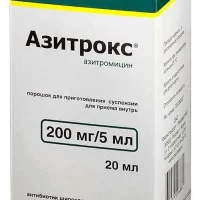Description
Ceftriaxone injections Pharmacodynamics
III generation cephalosporin antibiotic of broad spectrum for parenteral administration. Bactericidal activity is caused by inhibition of bacterial cell wall synthesis. It is resistant to most beta-lactamases of gram-positive and gram-negative microorganisms.
It is active against the following microorganisms:
Gram-positive aerobes: Staphylococcus aureus (including penicillinase-producing strains), Staphylococcus epidermidis. Streptococcus pneumoniae. Streptococcus pyogenes, Streptococcus spp. viridans group;
Gram-negative aerobes: Acinetobacter calcoaceticus. Borrelia burgdorferi. Enterobacter aerogenes. Enterobacter cloacae, Escherichia coli, Haemophilus influenzae (including strains producing penicillinase), Haemophilus parainfluenzae, Klebsiella spp. Klebsiella pneumoniae), Moraxella catarrhalis (including penicillinase-producing strains), Morganella morganii, Neisseria gonorrhoeae (including penicillinase-producing strains). Neisseria meningitidis, Proteus mirabilis, Proteus vulgaris, Serratia spp. (including Serratia marcescens); some strains of Pseudomonas aeruginosa are also sensitive; anaerobes: Bacteroides fragilis, Clostridium spp. (except Clostridium difficile), Peptostreptococcus spp. It has in vitro activity against most strains of the following microorganisms, although the clinical significance of this is unknown: Citrobacter diversus, Citrobacter freundii, Providencia spp. (including Providencia rettgeri), Salmonella spp. including Salmonella typhi, Shigella spp., Streptococcus agalactiae, Bacteroides bivius, Bacteroides melaninogenicus. Staphylococcus spp. resistant to methicillin is also resistant to cephalosporins, including ceftriaxone; many strains of group D streptococci and enterocococci, including Enterococcus faecalis, are also resistant to ceftriaxone.
Indications
Infectious and inflammatory diseases caused by microorganisms sensitive to ceftriaxone: abdominal organs (peritonitis, inflammatory diseases of the gastrointestinal tract (GIT), biliary tract, including cholangitis, gallbladder empyema), pelvic organs, the lower respiratory tract (including pneumonia, abscessed biliary tract). pneumonia, lung abscess, pleural empyema), bones and joints, skin and soft tissues (including infected wounds and burns), urinary tract (complicated and uncomplicated), acute otitis media, uncomplicated gonorrhea, bacterial meningitis, bacterial septicemia, Lyme disease.
Prevention of postoperative infections.
Infectious diseases in immunocompromised people.
Contraindications
Broad spectrum cephalosporin antibiotic of III generation for parenteral administration. Bactericidal activity is caused by inhibition of bacterial cell wall synthesis. It is resistant to most beta-lactamases of gram-positive and gram-negative microorganisms.
It is active against the following microorganisms:
Gram-positive aerobes: Staphylococcus aureus (including penicillinase-producing strains), Staphylococcus epidermidis. Streptococcus pneumoniae. Streptococcus pyogenes, Streptococcus spp. viridans group;
Gram-negative aerobes: Acinetobacter calcoaceticus. Borrelia burgdorferi. Enterobacter aerogenes. Enterobacter cloacae, Escherichia coli, Haemophilus influenzae (including strains producing penicillinase), Haemophilus parainfluenzae, Klebsiella spp. Klebsiella pneumoniae), Moraxella catarrhalis (including penicillinase-producing strains), Morganella morganii, Neisseria gonorrhoeae (including penicillinase-producing strains). Neisseria meningitidis, Proteus mirabilis, Proteus vulgaris, Serratia spp. (including Serratia marcescens); some strains of Pseudomonas aeruginosa are also sensitive; anaerobes: Bacteroides fragilis, Clostridium spp. (except Clostridium difficile), Peptostreptococcus spp. It has in vitro activity against most strains of the following microorganisms, although the clinical significance of this is unknown: Citrobacter diversus, Citrobacter freundii, Providencia spp. (including Providencia rettgeri), Salmonella spp. including Salmonella typhi, Shigella spp., Streptococcus agalactiae, Bacteroides bivius, Bacteroides melaninogenicus. Staphylococcus spp. resistant to methicillin is also resistant to cephalosporins, including ceftriaxone; many strains of group D streptococci and enterocococci, including Enterococcus faecalis, are also resistant to ceftriaxone.
Dosage and administration method
- Intravenously (v/v), intramuscularly (i/m).
- Do not use for dilution of Ceftriaxone injections solutions containing Cg2+!
- In adults, the initial daily dose depending on the type and severity of infection is 1-2 g once a day, or divided into 2 doses (every 12 hours), the total daily dose should not exceed 4 g.
- Lyme disease: for adults and children – 50 mg/kg (but no more than 2 g) once a day for 14 days. In uncomplicated gonorrhea – 250 mg v/m once.
- For prevention of postoperative complications – 1 g once 30-60 minutes before surgery. For operations on the colon and rectum, additional administration of a drug from the 5-nitroimidazole group is recommended.
- The dose for infants is 20-50 mg/kg/day.
- For treatment of skin and soft tissue infections, the recommended daily dose in children is 50-75 mg/kg divided into 2 doses (every 12 hours); the total daily dose should not exceed 2 g.
- In case of bacterial meningitis in children, the initial dose is 100 mg/kg (but not more than 4 g) once a day, further 100 mg/kg/day (but not more than 4 g) once a day or divided into 2 doses (every 12 hours). The duration of treatment is 7-14 days.
- In treatment of acute otitis media in children a single intravenous injection of 50 mg/kg (but not more than 1 g) is recommended.
- In treatment of other infections in children daily recommended dose is 50-75 mg/kg divided into 2 doses (every 12 hours), the total daily dose should not exceed 2 g.
- In children with body weight of 50 kg or more, doses for adults are used.
- In chronic renal insufficiency (CKD) (IQ less than 10 ml/min) – daily dose should not exceed 2 g; patients on hemodialysis do not require additional dose after hemodialysis, however, it is necessary to monitor ceftriaxone concentration in plasma, because its excretion in such patients may be delayed (dose adjustment may be required).
- In patients with renal-hepatic insufficiency the daily dose should not exceed 2 g without determining the plasma concentration of the drug.
- Treatment with Ceftriaxone injections should be continued for at least 2 days after symptoms and signs of infection have disappeared. The course of treatment is usually 4-14 days; for complicated infections a longer administration may be necessary. The course of treatment for infections caused by Streptococcus pyogenes should be at least 10 days.
- Preparation and administration of solutions: only freshly prepared solutions should be used. For intravenous administration 1 g of the drug is dissolved in 3.5 ml of 1% lidocaine solution. It is recommended to inject not more than 1 g into one buttock.
- For IV injection 1 g of the drug is dissolved in 10 ml of water for injection. It is administered by IV slowly (2-4 min).
- For intravenous infusion 2 g of Ceftriaxone injections are dissolved in 40 ml of Ca2+-free solution (0.9% sodium chloride solution, 5-10% dextrose solution, 5% levulose solution).
- Doses of 50 mg/kg or more should be administered by IV drip for 30 minutes.
- Lidocaine solution should never be administered intravenously!





